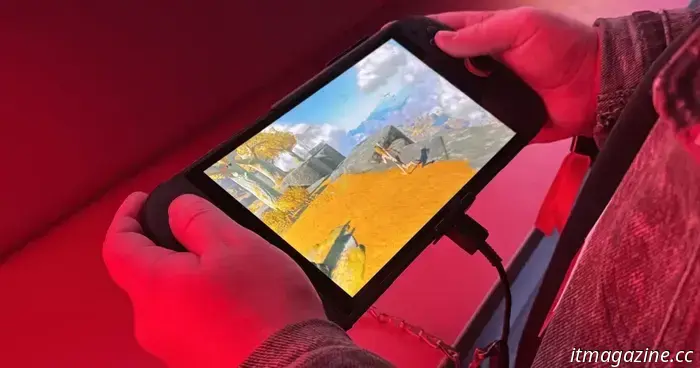
Analysis of the Nintendo Switch 2: How does it measure up against handheld PC gaming devices?
We have all been anticipating the Switch 2 for a considerable time, and with its arrival, there's much to dissect and various perspectives to explore. It's essential to understand the target audience for this device, its strengths, its competitors, and how it measures up against them.
However, this isn't as straightforward as it may seem. Numerous platforms and devices are available for gaming, each with unique focuses, advantages, and drawbacks. There is no definitive winner and no single device that excels in every category.
That being said, where does the Switch 2 fit in, and is it a device worth your attention? Let's examine it.
What should we benchmark the Switch 2 against?
Historically, comparing Nintendo consoles with others on the market has often been unproductive due to their distinct objectives. Choosing between a PlayStation 3 or an Xbox 360 made sense, but including the Wii in that comparison did not. If your goal was to play Call of Duty: Modern Warfare 3, your options were Sony or Microsoft, as the Wii's experience simply didn’t compare. To enjoy both Call of Duty and the latest Mario title, buying both consoles was the only reasonable choice.
The same logic applied to the original Switch, which prioritized first-party titles and its hybrid handheld/docked concept. Conversely, the PlayStation 4 and Xbox One X emphasized power, advanced visuals, and AAA games.
However, the Switch 2 shifts the dynamics a bit. With features like 4K output, a 120Hz HDR display, and support for both DLSS and ray tracing, Nintendo has dramatically upped the ante in terms of AAA gaming language. The market landscape has also evolved, presenting a variety of handheld gaming PCs alongside the PlayStations and Xboxes.
This development places many gamers in somewhat uncharted territory. Those accustomed to Nintendo may now have to familiarize themselves with these new terminologies and evaluate whether an upgrade is necessary, while AAA gamers must determine if Nintendo has crafted something they’ll find appealing. The third category of “play a bit of everything” gamers remains unchanged—they simply acquire multiple systems.
For example, I currently own five Switch consoles within my two-person household and have preordered two Switch 2 consoles as well. Additionally, we possess a Steam Deck, an OLED Steam Deck, a PlayStation 5, a PlayStation 5 Pro, and a powerful desktop featuring a Ryzen 9 7950X3D 16-Core CPU, 128GB DDR4 memory, 4TB NVMe storage, and an Nvidia RTX 4090 GPU.
It's not as excessive as it appears—my Nintendo Switch is for playing Nintendo games and other titles exclusive to the Switch, the Steam Deck fits the bill for games absent on the Switch, and the PlayStation 5 is dedicated to AAA gaming.
To succinctly address the question of what to compare the Switch 2 with, I would say other handheld devices. Comparing it (or any handheld) to a gaming desktop is futile, as the capabilities of each realm differ significantly, particularly when desktop systems have endless power and cooling options. Consider the specifications of the desktop mentioned — I’ll even create a comparison table featuring it alongside one of the most robust handhelds currently available, the Asus ROG Ally X.
Gaming Desktop | ROG Ally X
-------------------------------|--------------------
CPU Cores: 16 cores | 8 cores
Threads: 32 threads | 16 threads
Base Clock: 4.2 GHz | 3.3 GHz
RAM: 128GB | 24GB
Graphics: RTX 4090 GPU | RDNA 3
Storage: 4TB | 1TB
For those not well-versed in PC components, just examine those figures — there’s no competition. To achieve the best visuals and performance, one must invest substantially and generally play at a desk since the power consumption could drain a handheld battery in moments. If you seek more portability, you must temper your expectations accordingly.
Switch 2 vs. Steam Deck OLED vs. ROG Ally X
The Steam Deck was the original competitor to the Switch — it even earned the nickname “Switch killer” for a while, although that didn’t pan out. However, it sold remarkably well, which led to a surge of powerful alternatives. Today, I would consider the Steam Deck OLED and ROG Ally X as the two leading contenders. If we ranked these devices by overall power, it would look like this:
Switch 2 > Steam Deck OLED > ROG Ally X
Nonetheless, power alone isn't everything. Let’s dive into the particulars:
Battery
The simplest way to compare batteries is through battery capacity (Wh) and energy usage.
| Device | Switch 2 | Steam Deck OLED | ROG Ally X |
|-------------------------|----------|-----------------|------------|
| Watt Hours | 20Wh | 50Wh | 80Wh |
| Minimum Hours of Gameplay| 2







Other articles
 1923 has concluded. Here are five additional shows you ought to check out.
Following the Season 2 finale of 1923, here are five additional series to check out, featuring another Western by Taylor Sheridan and a somber drama on Netflix.
1923 has concluded. Here are five additional shows you ought to check out.
Following the Season 2 finale of 1923, here are five additional series to check out, featuring another Western by Taylor Sheridan and a somber drama on Netflix.
 3 comedies on Amazon Prime Video that you should check out in April 2025
In April 2025, two out of the three comedies available on Amazon Prime Video are new series that will release all episodes at once for your viewing pleasure.
3 comedies on Amazon Prime Video that you should check out in April 2025
In April 2025, two out of the three comedies available on Amazon Prime Video are new series that will release all episodes at once for your viewing pleasure.
 Don't expect an elaborate design update for the iPhone 17 Pro.
The iPhone 17 Pro is expected to enlarge the size of the camera bump, but it’s unlikely to feature any elaborate two-tone design or updates to the display aesthetics.
Don't expect an elaborate design update for the iPhone 17 Pro.
The iPhone 17 Pro is expected to enlarge the size of the camera bump, but it’s unlikely to feature any elaborate two-tone design or updates to the display aesthetics.
 Halle Berry has stated that she will not reprise her role as Storm in Avengers: Doomsday.
Last month, Marvel announced the majority of the cast, including . However, some notable absences from the returning X-Men include Halle Berry and Hugh Jackman. While it's probable that Jackman will appear in some form due to his recent appearance in , Berry has apparently dismissed the possibility of returning to her role […]
Halle Berry has stated that she will not reprise her role as Storm in Avengers: Doomsday.
Last month, Marvel announced the majority of the cast, including . However, some notable absences from the returning X-Men include Halle Berry and Hugh Jackman. While it's probable that Jackman will appear in some form due to his recent appearance in , Berry has apparently dismissed the possibility of returning to her role […]
 The director of Fantastic Four states that there are "no other superheroes" present in the universe of his film.
The film takes place in its own universe, and director Matt Shakman mentions that this universe is largely separate from the broader MCU.
The director of Fantastic Four states that there are "no other superheroes" present in the universe of his film.
The film takes place in its own universe, and director Matt Shakman mentions that this universe is largely separate from the broader MCU.
Analysis of the Nintendo Switch 2: How does it measure up against handheld PC gaming devices?
The Nintendo Switch 2 Direct revealed numerous surprises. With more information about the console now available, how does it compare to other handheld devices?
